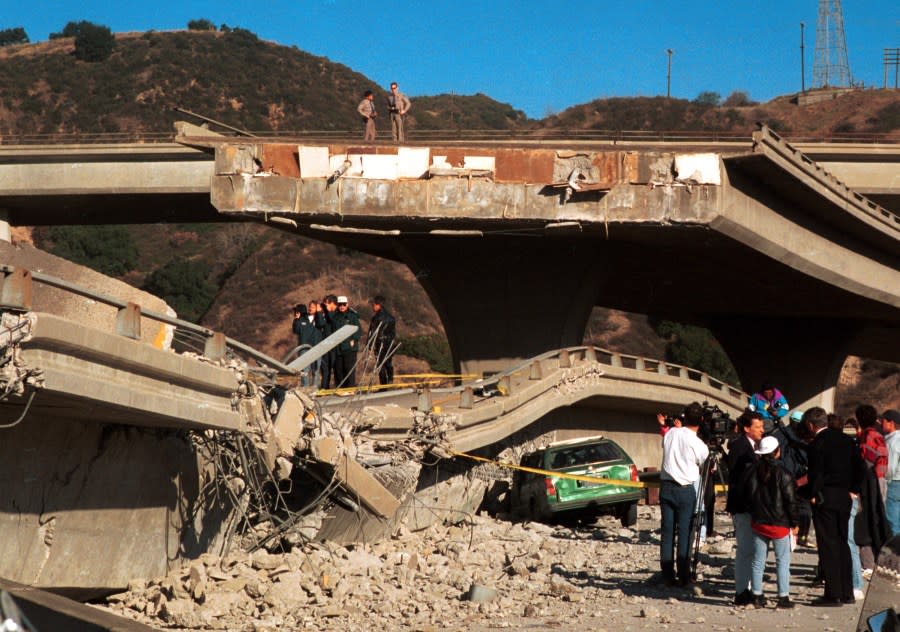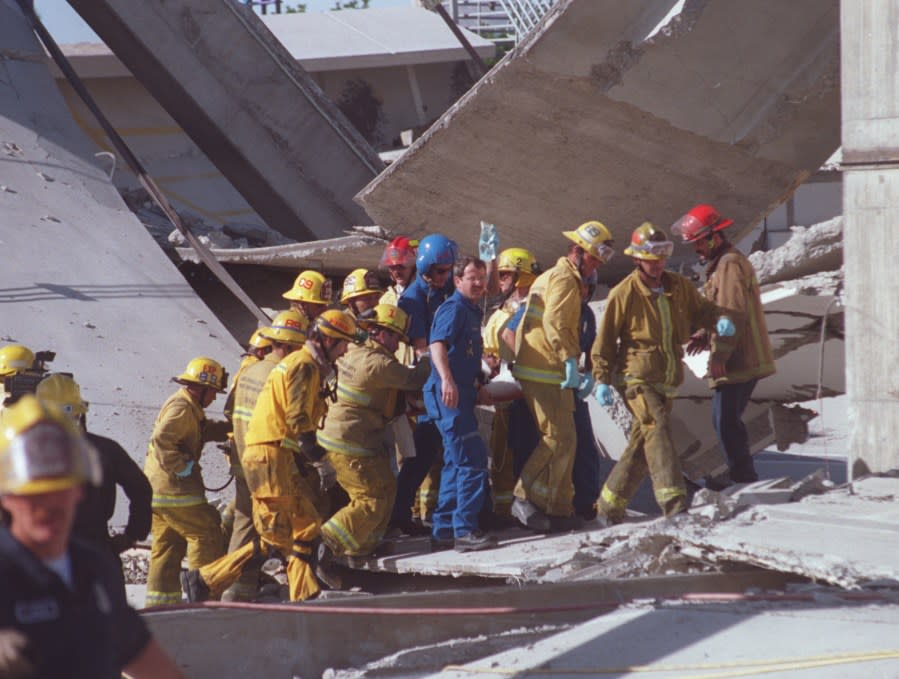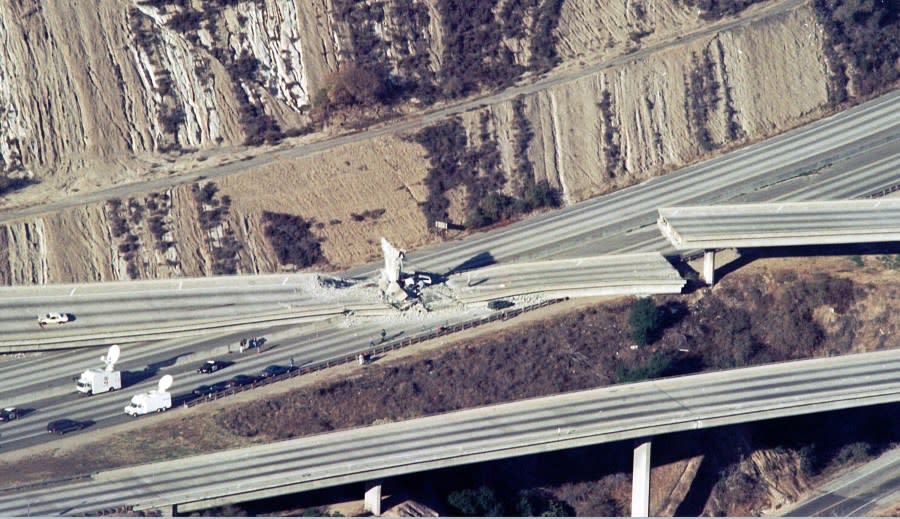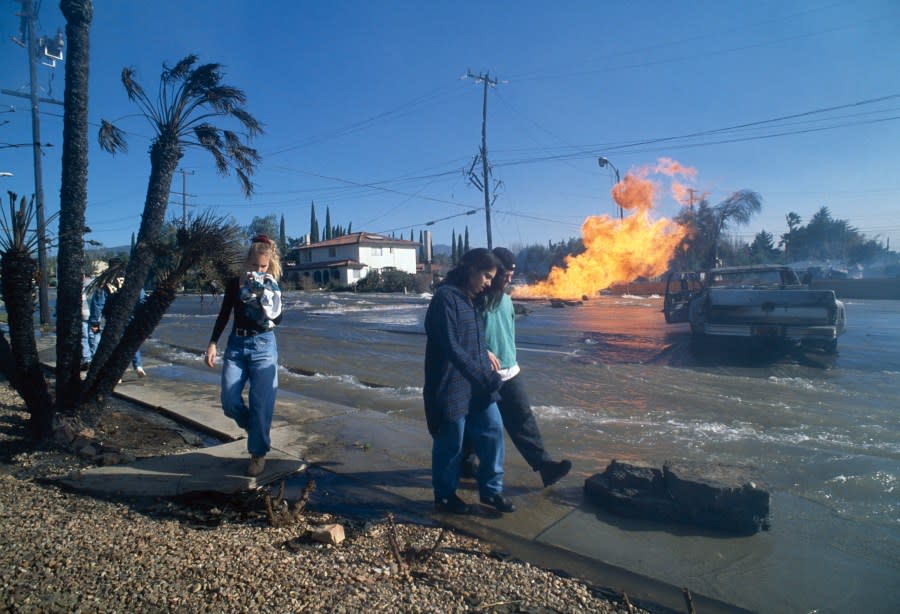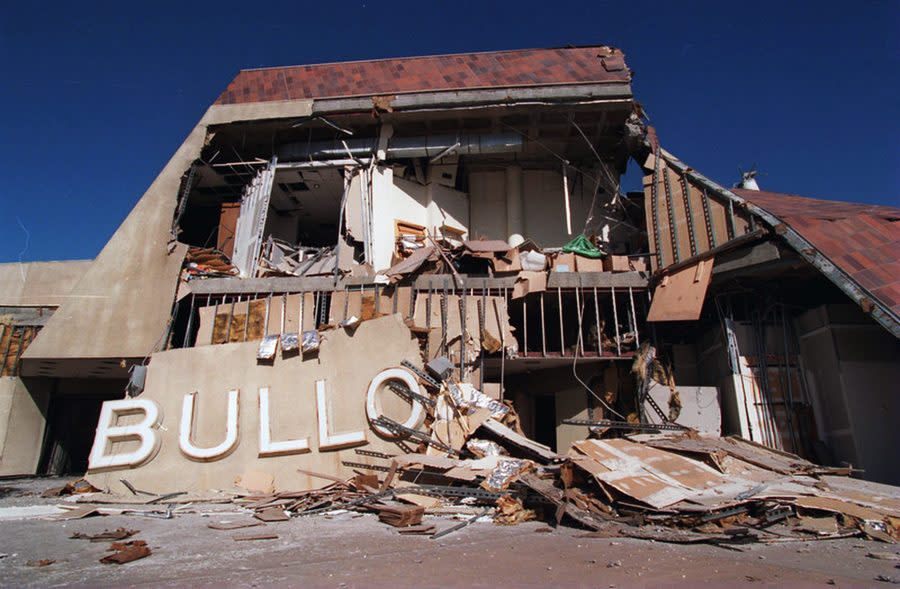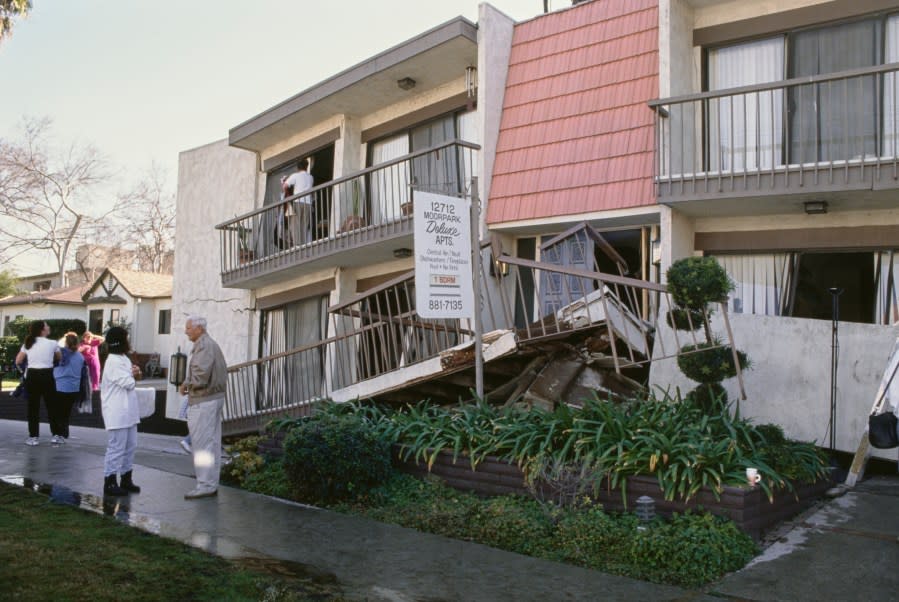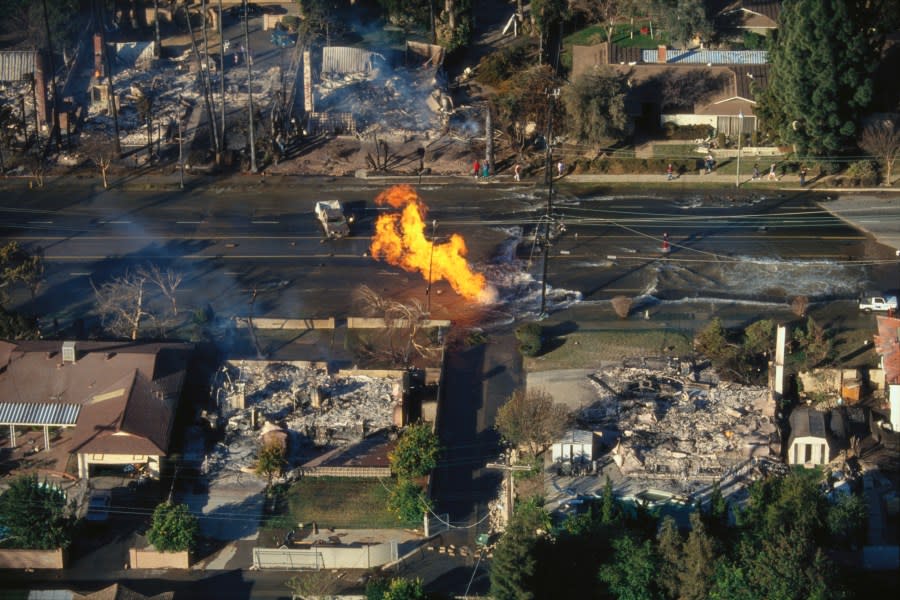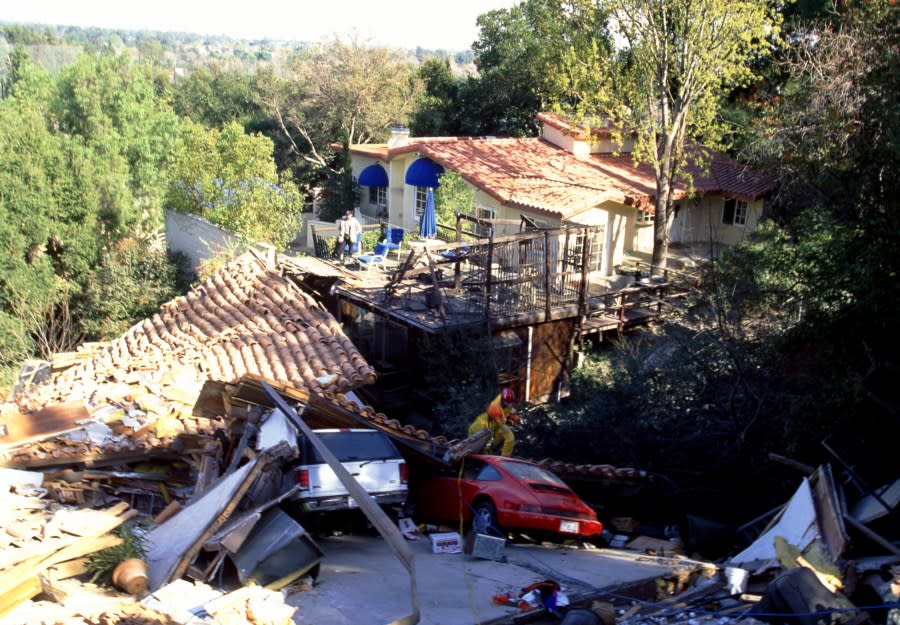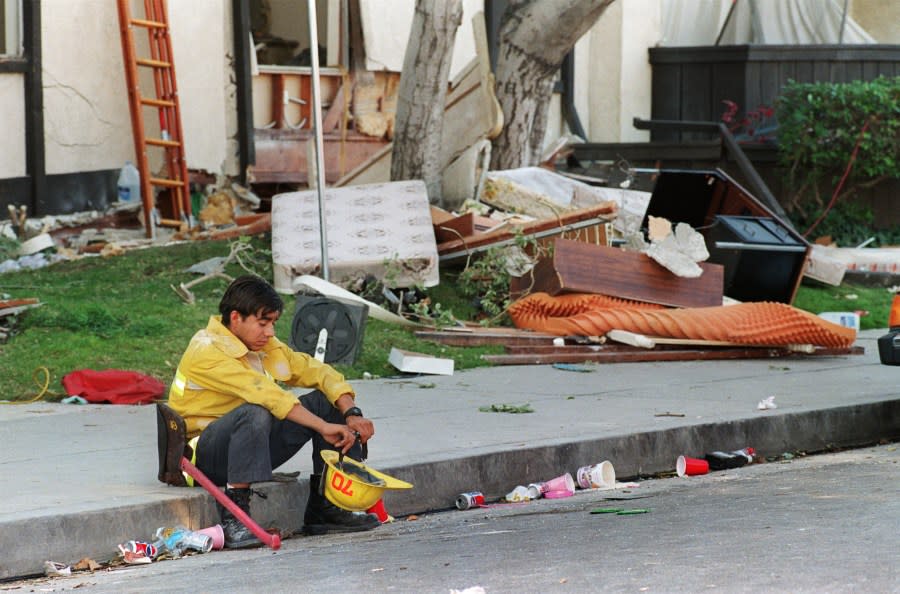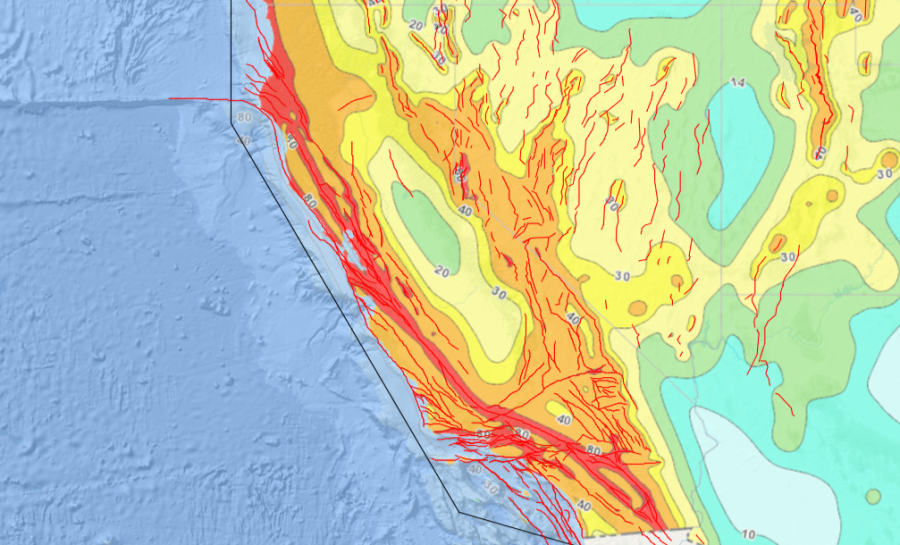Is Los Angeles due for another major earthquake?

On January 17, 1994, the ground under Los Angeles violently shook as a magnitude 6.7 earthquake centered in the San Fernando Valley hit the region.
Damage was catastrophic as tens of thousands of buildings cracked or collapsed entirely. Freeways buckled and at least 57 people lost their lives in the immediate aftermath of what became known as the Northridge Earthquake.
At the time, L.A. hadn’t experienced an earthquake of that magnitude in 23 years, and it has now been 30 years since the Northridge quake.
Does this mean Southern California is overdue for another major earthquake?
The U.S. Geological Survey says the probability of a magnitude 6.7 quake hitting the L.A. area again within 30 years is 60%. There’s a 46% chance of a magnitude 7.0 and a 31% probability of a magnitude 7.5, USGS says.
So the likelihood of another Northridge-sized quake happening in the coming decades is, unfortunately, strong.
LOS ANGELES, CA – JANUARY 17: Northridge 6.7 earthquake caused major damage throughout Los Angeles including the freeway collapse of Interstate 5 and Highway 14 overpasses, January 17,1994 in Los Angeles, California. (Photo by Bob Riha, Jr./Getty Images) Urban Search and Rescue team members carry Salvador Pena away from the collapsed garage at Northridge Fashion Center where he had been trapped after a structure fell on him during the 1994 earthquake. (Photo by Boris Yaro/Los Angeles Times via Getty Images) California National Guard Aerial Tour of Interstate 5 and Highway 14 Freeway Intersection which were heavily damaged and some collapsed during the Northridge Earthquake in photo taken, January 24, 1994 in Los Angeles, California. The earthquake measured 6.7 in magnitude. (Photo by Bob Riha, Jr./Getty Images) LOS ANGELES – JANUARY 17: (NO U.S. TABLOID SALES) Pedestrians walk along a flooded road January 17, 1994 caused by the Northridge earthquake in the greater Los Angeles, CA area. The Northridge earthquake is the first earthquake to strike directly under an urban area of the United States since the 1933 Long Beach earthquake. (Photo by David Hume Kennerly/Getty Images) Los Angeles, – January 17: The ruins of the Northridge Fashion Center after the Northridge Earthquake in Los Angeles on Monday, January 17, 1994. Damage to the mall, built in the early ’70s, was estimated at 1-million dollars. (Photo by John McCoy/MediaNews Group/Los Angeles Daily News via Getty Images) The clean-up begins of damage in the Van Nuys neighbourhood following the 1994 Northridge earthquake, which reached a magnitude of 6.7, in the San Fernando Valley region of the Los Angeles, California, 17th January 1994. With a duration of ten-to-twenty seconds, it was felt as far away as San Diego and Las Vegas. (Photo by Vinnie Zuffante/Getty Images) Fire and water damage resulting from the 1994 Northridge Earthquake. (Photo by �� Steve Starr/CORBIS/Corbis via Getty Images) LOS ANGELES, CA – JANUARY 17: Fire and rescue teams search a house that collapsed after the 1994 Northridge earthquake on January 17, 1994 in Los Angeles, California. The 1994 Northridge earthquake was a moment magnitude 6.7, blind thrust earthquake that occurred on the annual Martin Luther King, Jr. Day holiday, on Monday, January 17, 1994. It occurred at 4:30:55 a.m. and was located in the San Fernando Valley region in the County of Los Angeles. (Photo by Bill Nation/Sygma via Getty Images) A rescue worker sits on curb in front of the heavily-damaged Northridge Meadows Apartments, January 17, 1994, after 14th body was removed following Northridge earthquake. At least more about fifty persons died in the seisme. (Photo by CHRIS WILKINS / AFP) (Photo by CHRIS WILKINS/AFP via Getty Images)
The 1994 earthquake occurred along a small, previously undiscovered fault. The greater concern, says world-renowned seismologist Dr. Lucy Jones, is the 800-mile-long San Andreas Fault, which has already been responsible for many of California’s largest quakes.
“[Northridge] wasn’t ‘The Big One,’” Jones recently told KTLA 5 News anchor Frank Buckley. “When the San Andreas [Fault] goes, we’re going get that level of shaking instead of over just the San Fernando Valley … It will be a ten, 20, 50 times larger area that will receive the strongest level of shaking. That’s the difference with a bigger earthquake is a longer fault.”
Latest California Earthquakes – Interactive Map
Both the 1906 San Francisco earthquake and 1989’s Loma Prieta quake occurred along the San Andreas Fault and had devastating impacts on the Bay Area.
In Southern California, where it terminates at the Salton Sea, experts say the San Andreas Fault produces quakes at an interval of roughly every 150 years – only there hasn’t been one in at least 300 years.
Despite the gap, Dr. Jones doesn’t believe this means there is imminent danger.
“We have a much better understanding of the physics of earthquake faults today,” she said. “It’s a much more random process over time. If we went 10,000 years without an earthquake then yes, we’d have to have one. But at just twice the average [of 300 years], that’s just the random distribution that we see.”
Dr. Jones says Southern California is better prepared for a large earthquake today than 1994 due to seismic retrofitting and improvements in building and road construction. If or when “The Big One” occurs, she says most people will survive.
Her greater concern is the economic and social fallout.
“We have seen communities really destroyed by these types of disasters. People leave and go elsewhere … Whether our community comes out on the other end okay is much more debatable.”
For the latest news, weather, sports, and streaming video, head to KTLA.
